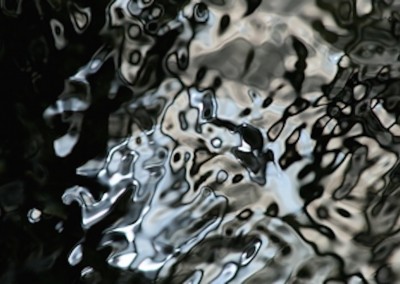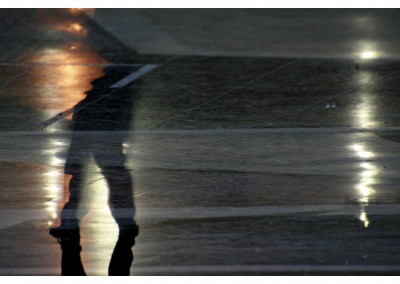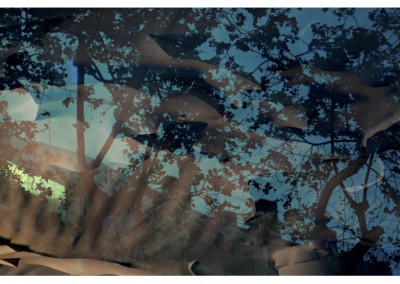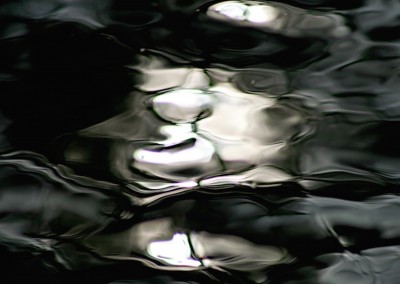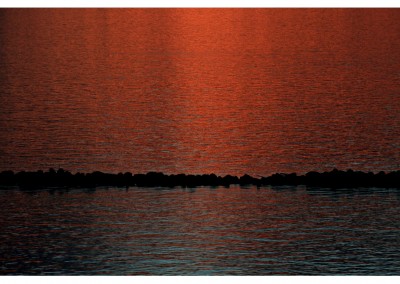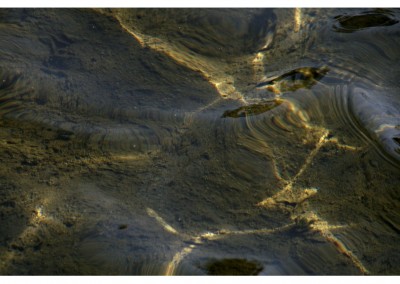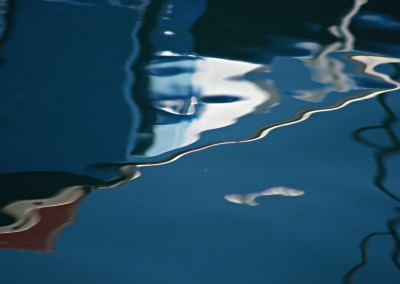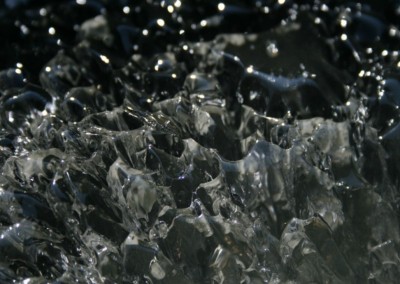Vera Botterbusch
Vera Botterbusch
Vit et travaille à Munich /Allemagne Elle est née à Dortmund, elle a fait des études de lettres françaises et allemandes, de la mise en scène et des beaux arts.La réalisatrice de films et photographe Vera Botterbusch est bien connue et réputée pour ses films documentaires sensibles concernant la littérature, l’art, la musique et le théâtre, qu’elle a réalisés depuis plus de 30 ans pour la télévision allemande de Munich, comme par exemple des films sur Felix Mendelssohn-Bartholdy, Stendhal, Louis Aragon, Hans Christian Andersen, Nathalie Sarraute, Jean Sibelius, Julien Green, Robert Louis Stevenson; Jean Giono,Alfred Döblin, Ernst Barlach, André Gide, Theodor Fontane, Wole Soyinka, Antoine Watteau. Elle est connue par son travail de journaliste pour la Süddeutsche Zeitung, par ses oeuvres théatrales et par ses expositions. Elle est membre dans l’association des artistes et dans le PEN. Vera Botterbusch habite à Munich et dans la forêt bavaroise-bohémienne.
Dernières Expositions individuelles:
2010 Der Weiße Schatten, Galerie Henseler, München
2011 Elementar-Zauber, Preview, Gasteig München, Foyer Philharmonie
2011-12 Elementar-Zauber, Gasteig München, Foyer Kleiner Konzertsaal
2012 Parksonate, Galerie im Schlosspavillon, Ismaning ; Resonanzen, Fotografische Expeditionen, Museum Moderner Kunst Wörlen, Passau; Licht, Himmelfahrtskirche, München; Résonances, La Capitale Galerie, Paris
2013-14 Schläft ein Lied in allen Dingen, Foto-Poesien, Romantikerhaus, Jena 2014 Larghetto, Foto-Poesien, Otto-Galerie, München; Die Welt ist ein Markt, Fotografien aus Abeokuta und Isara/ Nigeria, EineWeltHaus, München Views and Secrets, Fotografien aus Abeokuta und Isara, Ake Arts & Book Festival, Abeokuta, Nigeria
2014-15 Die Welt ist ein Markt, Fotografien aus Abeokuta und Isara/ Nigeria, Staatliche Bibliothek, Passau; Die Welt ist ein Markt, Fotografien aus Abeokuta und Isara/ Nigeria, Gethsemanekirche, München; Views and Secrets/Die Welt ist ein Markt, Fotografien aus Abeokuta und Isara, Deutsches Generalkonsulat, Lagos/ Nigeria
2015 Und alle Bilder immer angeschauter, Weytterturm, Straubing; Air, Galerie im Schlosspavillon, Ismaning; Augenblicke, Üblacker-Häusl, München
2016 Air, La Capitale Galerie, Paris
Publication/ Photo: Vera Botterbusch, Resonanzen, Fotografische Expeditionen, Morsak Verlag, Grafenau-12 Die Welt ist ein Markt, Fotografienvon Vera Botterbusch aus Abeokuta und Isara/ Nigeria, dem nigerianischen Literaturnobelpreisträger Wole Soyinka zum 80. Geburtstag, Staatliche Bibliothek Passau, 2014
Extrait :
“Éruptions cosmiques, fées des eaux et créatures de lumière. Une rose – au dire de Gertrude Stein – est une rose est une rose. Et la photo d’une rose n’est pas une rose mais la photo d’une rose. Mais une photo n’est pas une photo n’est pas une photo. Ceci à propos de l’art et de la nature. Je connais suffisamment bien les choses du monde pour les reconnaître quand je les regarde. Mais devant les photos de Vera Botterbusch ce que j’ai vu cent fois je le vois comme pour la première fois.
Les photos sont des images concrètes de la réalité, elles représentent quelque chose de réel, pourtant je ne saurais pas dire quelle réalité, je ne sais pas d’où viennent les images; ce qui est représenté ne se révèle pas directement. Quel que soit ce que je vois, jamais je ne l’ai vu de cette manière.
Mais les images me rappellent quelque chose. Éruptions cosmiques dans un feu; tempêtes de neige en plein incendie, des paysages volcaniques jaillissant d’un olivier; fées des eaux et diables de cendre, monstres de pierre, nains de neige et créatures de lumière – et il n’y a cependant que de l’eau, de la glace, de la neige, des pierres, du sable, du feu, une branche, une écorce, la mer. Matériau mystérieux, étrange et étrangère matérialité qui révèlent, sous une certaine forme, ce qui est représenté: une forme traduisant l’émotion, le mouvement, la création…
Les photos de Vera Botterbusch redonnent à la nature des choses, telles qu’elles m’apparaissent dans le monde, une part de leur magie, de leur charme, de leur monstruosité, cette part qu’elles ont perdues depuis que, sous la constance de l’habitude, elles me sont devenues habituelles et ordinaires. Les photos de Vera Botterbusch ce sont des résonances, des réminiscences, des échos, desc reflets, des réflexions.
RéSonances du monde qui lui fut donné, qu’elle a vu et qui résonne en formes et couleurs. Ce qui a été vu par la photographe – ce qu’elle a subjectivement trouvé, éprouvé – me regarde, moi, et s’associe, résonance du monde photographié, à mes souvenirs subjectifs de contemplateur, s’associe à mon imagination et à mes images. De la relation dialectique entre ce qui est perçu et ce qui est représenté naît la magie des images. Klaus Konjetzky
***
Vera Botterbusch was born in Dortmund. Vera Botterbusch lives and works in Munich and in the Bavarian Forest. She studied Romance language and literature, German literature, arts and directing in Bonn, Münster, Grenoble and Munich. As a film maker and photographer she is well-known for her sensitive documentaries about music and literature, arts and theatre. For more than 30 years she has realized films about composers, writers and artists for Bavarian television in Munich such asCharles Baudelaire, George Sand, Felix Mendelssohn-Bartholdy, Sylvia Plath, Jean Joubert, Stendhal, Prokofiew, Louis Aragon, Balthus, Hans Christian Andersen, Nathalie Sarraute, Annie Ernaux, Jean Sibelius, Julien Green, Robert Louis Stevenson, Jean Giono, Frédéric Chopin, Alfred Döblin, Ernst Barlach, André Gide, Theodor Fontane, Wole Soyinka, Jean Rouaud, Antoine Watteau, Ioanna Karystiani, Gilles Rozier …
Cosmic eruptions, water nymphs, and fairies of light Photographs by Vera Botterbusch An essay by Klaus Konjetzky A rose – according to Gertrude Stein – is a rose is a rose. And the photo of a rose is not a rose but the photo of a rose. But a photo is not a photo is not a photo. So much about art and nature. I am familiar with the visible world and can recognize things. But in the photographs by Vera Botterbusch I see the things observed a hundred times as if I see them for the first time. The photographs show something concrete and show something real but I cannot say what the pictures are about and where exactly they have been taken; the things portrayed are not revealed instantly. Whateverit is that I see, I have never seen it this way. But the pictures remind me of something.*Dream images.Like pictures of the earth taken from outer space: there are oceans, coast lines,islands, mountains, continents, and yet they are „only“ icy rocks in a little frozen brook in winter. There are cosmic eruptions in a potato fire, snow storms in a sea of flames, volcanic landscapes in an olive tree, water nymphs and ash devils, stone monsters, snow gnomes and fairies of light-but it is only water, ice, snow, stones, sand fire, a branch, some bark, the sea.The enigmatic object matter, its strange and irritating materiality -whatever it may be-reveals itself in the pictures in a specific state; it is the state of an emotion, a movement, a creative process. I have become involved and thus have become a part of the composition. I am the observer who reflects on the puzzling phenomena, the mysteries and gives a meaning of my own. *I look into a colourful world of things through a pane of glass and at the same time I look out of it, both an observer and a person being observed. A chaotic yet organized world is becoming real in that window display. In reflections, cracks and refractions things converge and become one picture. *To me Vera Botterbusch’s photographs recapture some of the magic, the enchantment and the magnificence imminent in the natural visible world where they have got lost, where they have – from habit and custom – become ordinary and trivial for me. Botterbusch’s photographs are resonances, reminiscences, echoes, reflexes and reflections. Re-Sonances of the existing and observed world resounding in shapes and colours. What the photographer sees – what she felt and found herself – looks at me and combines with my own subjective recollections, imagination and images as a resonance of the photographed world. The magic of pictures develops through the dialectic combination of things perceived and things depicted. *Vera Botterbusch has an excellent eye for proportions, relations, symmetry, structures, coherence and details. And she is rigorously precise. Her visual approach is not a technical one but an aesthetic one; she does not think in categories of centimetres, length, width and height but sees images. Therefore every picture has its internal necessity and thus its external appearance.Just as there is absolute pitch there might be absolute sight. Absolute sight means seeing structures that relate the multiplicity of details in the only plausible way to each other. That is why Vera Botterbusch can discover things, processes and connections that remain hidden in reality and reveal them for us in her pictures and make us aware of them. *Looking behind things means taking a patient, open look upon things. Meditation philosophy teaches you to look at a thing for a long time until it surrenders and shines as an optical resonance of the observer. *In Vera Botterbusch’s photographs the „terra incognita“ of the world we know and are familiar with is revealed; her photographic expeditions are the result of contemplation and close observation.Her ability to concentrate on processes and appearances may have something to do with her contemplative nature, certainly she has developed and improved her explorative skills in her career over 30 years as a film maker: exposing and pointing out aspects of reality which had got lost in the confusing abundance of the world. The secret of all art lies in the sensual process of depicting and understanding. There is nothing vague and superficial in art.Striving for creative perfection is all that matters in art. The greatest poet uses the same limited vocabulary as everybody else. In the beginning the most daring painter does not see anything more than the rest of us, the best photographer does not deal with any other world than ours. However, what the world really looks like is presented in art. And through art there is meaning. *Through these photographs I can experience something that I can find only in poetry: the transformation of the functionality of objects into their artistic existence.Vera Botterbusch’s photographs are both graphic art and photo poetry. Her photos of well-known things reveal the wonders of the material world that have never been seen like that before. Things come into existence by being looked at and are transformed in the process. I find myself placed at the elementary stage of objects, I become absorbed by these things in the way I become absorbed by a poem and contemplate t myself. *Understanding and knowing the world is a matter of perspective. I can be worlds apart from the obvious. Vera Botterbusch’s photo poetry takes me close to the very core of the natural world and accompanies me to the far reaches of magic and imagination. And there is neither big nor small, neither inside or outside, neither true nor false, neither real nor unreal. Everything is possible in this magic kingdom because everything is just the way I see it. Translated by Sylvia Grashey

